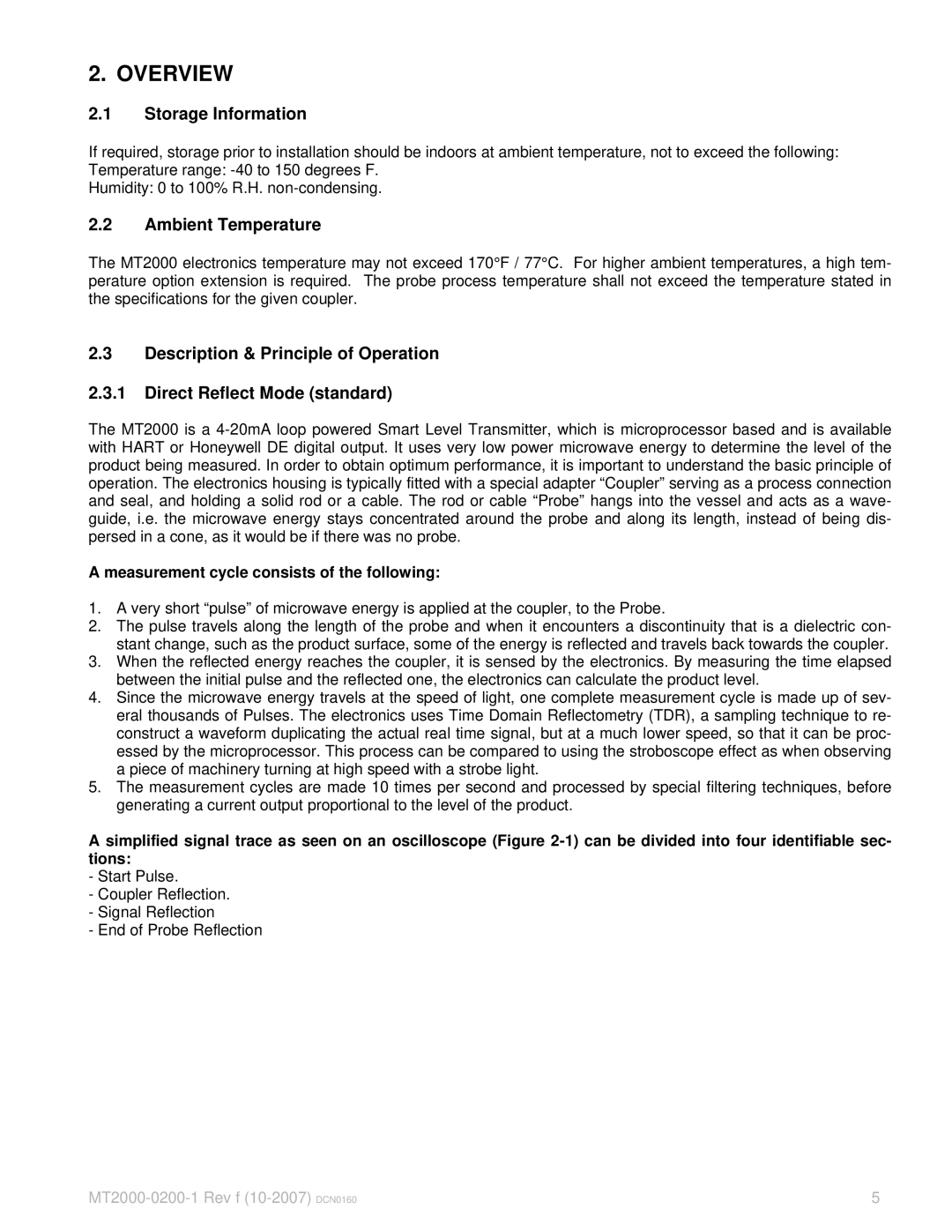2. OVERVIEW
2.1Storage Information
If required, storage prior to installation should be indoors at ambient temperature, not to exceed the following: Temperature range:
Humidity: 0 to 100% R.H.
2.2Ambient Temperature
The MT2000 electronics temperature may not exceed 170°F / 77°C. For higher ambient temperatures, a high tem- perature option extension is required. The probe process temperature shall not exceed the temperature stated in the specifications for the given coupler.
2.3Description & Principle of Operation
2.3.1Direct Reflect Mode (standard)
The MT2000 is a
A measurement cycle consists of the following:
1.A very short “pulse” of microwave energy is applied at the coupler, to the Probe.
2.The pulse travels along the length of the probe and when it encounters a discontinuity that is a dielectric con- stant change, such as the product surface, some of the energy is reflected and travels back towards the coupler.
3.When the reflected energy reaches the coupler, it is sensed by the electronics. By measuring the time elapsed between the initial pulse and the reflected one, the electronics can calculate the product level.
4.Since the microwave energy travels at the speed of light, one complete measurement cycle is made up of sev- eral thousands of Pulses. The electronics uses Time Domain Reflectometry (TDR), a sampling technique to re- construct a waveform duplicating the actual real time signal, but at a much lower speed, so that it can be proc- essed by the microprocessor. This process can be compared to using the stroboscope effect as when observing a piece of machinery turning at high speed with a strobe light.
5.The measurement cycles are made 10 times per second and processed by special filtering techniques, before generating a current output proportional to the level of the product.
A simplified signal trace as seen on an oscilloscope (Figure
-Start Pulse.
-Coupler Reflection.
-Signal Reflection
-End of Probe Reflection
5 |
